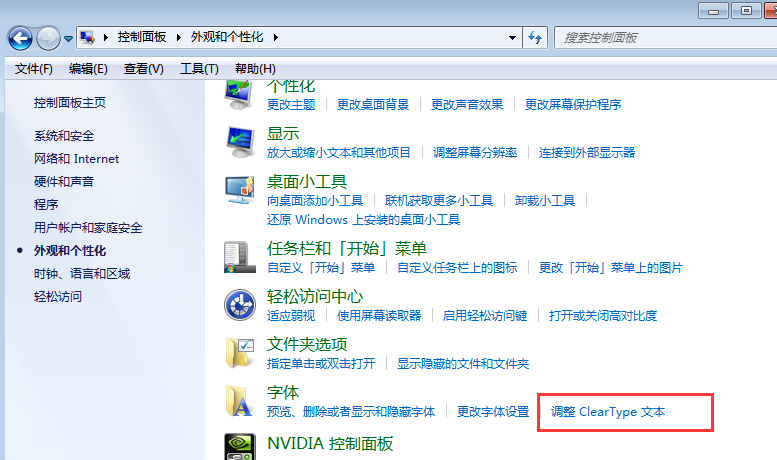目標(biāo)檢測進(jìn)階:使用深度學(xué)習(xí)和 OpenCV 進(jìn)行目標(biāo)檢測
使用深度學(xué)習(xí)和 OpenCV 進(jìn)行目標(biāo)檢測
基于深度學(xué)習(xí)的對象檢測時,您可能會遇到三種主要的對象檢測方法:
Faster R-CNNs (Ren et al., 2015)
You Only Look Once (YOLO) (Redmon et al., 2015)
Single Shot Detectors (SSD)(Liu 等人,2015 年)
Faster R-CNNs 可能是使用深度學(xué)習(xí)進(jìn)行對象檢測最“聽說”的方法;然而,該技術(shù)可能難以理解(特別是對于深度學(xué)習(xí)的初學(xué)者)、難以實(shí)施且難以訓(xùn)練。
此外,即使使用“更快”的 R-CNN 實(shí)現(xiàn)(其中“R”代表“區(qū)域提議”),算法也可能非常慢,大約為 7 FPS。
如果追求純粹的速度,那么我們傾向于使用 YOLO,因?yàn)檫@種算法要快得多,能夠在 Titan X GPU 上處理 40-90 FPS。 YOLO 的超快變體甚至可以達(dá)到 155 FPS。
YOLO 的問題在于它的準(zhǔn)確性不高。
最初由 Google 開發(fā)的 SSD 是兩者之間的平衡。該算法比 Faster R-CNN 更直接。
MobileNets:高效(深度)神經(jīng)網(wǎng)絡(luò)
在構(gòu)建對象檢測網(wǎng)絡(luò)時,我們通常使用現(xiàn)有的網(wǎng)絡(luò)架構(gòu),例如 VGG 或 ResNet,這些網(wǎng)絡(luò)架構(gòu)可能非常大,大約 200-500MB。 由于其龐大的規(guī)模和由此產(chǎn)生的計算數(shù)量,諸如此類的網(wǎng)絡(luò)架構(gòu)不適合資源受限的設(shè)備。 相反,我們可以使用 Google 研究人員的另一篇論文 MobileNets(Howard 等人,2017 年)。我們稱這些網(wǎng)絡(luò)為“MobileNets”,因?yàn)樗鼈儗橘Y源受限的設(shè)備而設(shè)計,例如您的智能手機(jī)。 MobileNet 與傳統(tǒng) CNN 的不同之處在于使用了深度可分離卷積。 深度可分離卷積背后的一般思想是將卷積分成兩個階段:
3×3 深度卷積。
隨后是 1×1 逐點(diǎn)卷積。
這使我們能夠?qū)嶋H減少網(wǎng)絡(luò)中的參數(shù)數(shù)量。 問題是犧牲了準(zhǔn)確性——MobileNets 通常不如它們的大哥們準(zhǔn)確…… ……但它們的資源效率要高得多。
使用 OpenCV 進(jìn)行基于深度學(xué)習(xí)的對象檢測
MobileNet SSD 首先在 COCO 數(shù)據(jù)集(上下文中的常見對象)上進(jìn)行訓(xùn)練,然后在 PASCAL VOC 上進(jìn)行微調(diào),達(dá)到 72.7% mAP(平均精度)。
因此,我們可以檢測圖像中的 20 個對象(背景類為 +1),包括飛機(jī)、自行車、鳥、船、瓶子、公共汽車、汽車、貓、椅子、牛、餐桌、狗、馬、摩托車、人、盆栽 植物、羊、沙發(fā)、火車和電視顯示器。
在本節(jié)中,我們將使用 OpenCV 中的 MobileNet SSD + 深度神經(jīng)網(wǎng)絡(luò) (dnn) 模塊來構(gòu)建我們的目標(biāo)檢測器。
打開一個新文件,將其命名為 object_detection.py ,并插入以下代碼:
import numpy as np import cv2 if __name__=="__main__": image_name = '11.jpg' prototxt = 'MobileNetSSD_deploy.prototxt.txt' model_path = 'MobileNetSSD_deploy.caffemodel' confidence_ta = 0.2 # 初始化MobileNet SSD訓(xùn)練的類標(biāo)簽列表 # 檢測,然后為每個類生成一組邊界框顏色 CLASSES = ["background", "aeroplane", "bicycle", "bird", "boat", "bottle", "bus", "car", "cat", "chair", "cow", "diningtable", "dog", "horse", "motorbike", "person", "pottedplant", "sheep", "sofa", "train", "tvmonitor"] COLORS = np.random.uniform(0, 255, size=(len(CLASSES), 3))
1
2
3
4
5
6
7
8
9
10
11
12
13
14
導(dǎo)入需要的包。
定義全局參數(shù):
image_name:輸入圖像的路徑。
prototxt :Caffe prototxt 文件的路徑。
model_path :預(yù)訓(xùn)練模型的路徑。
confidence_ta :過濾弱檢測的最小概率閾值。 默認(rèn)值為 20%。
接下來,讓我們初始化類標(biāo)簽和邊界框顏色。
# load our serialized model from disk print("[INFO] loading model...") net = cv2.dnn.readNetFromCaffe(prototxt, model_path) # 加載輸入圖像并為圖像構(gòu)造一個輸入blob # 將大小調(diào)整為固定的300x300像素。 # (注意:SSD模型的輸入是300x300像素) image = cv2.imread(image_name) (h, w) = image.shape[:2] blob = cv2.dnn.blobFromImage(cv2.resize(image, (300, 300)), 0.007843, (300, 300), 127.5) # 通過網(wǎng)絡(luò)傳遞blob并獲得檢測結(jié)果和 # 預(yù)測 print("[INFO] computing object detections...") net.setInput(blob) detections = net.forward()
1
2
3
4
5
6
7
8
9
10
11
12
13
14
15
從磁盤加載模型。
讀取圖片。
提取高度和寬度(第 35 行),并從圖像中計算一個 300 x 300 像素的 blob。
將blob放入神經(jīng)網(wǎng)絡(luò)。
計算輸入的前向傳遞,將結(jié)果存儲為 detections。
# 循環(huán)檢測結(jié)果 for i in np.arange(0, detections.shape[2]): # 提取與數(shù)據(jù)相關(guān)的置信度(即概率) # 預(yù)測 confidence = detections[0, 0, i, 2] # 通過確保“置信度”來過濾掉弱檢測 # 大于最小置信度 if confidence > confidence_ta: # 從`detections`中提取類標(biāo)簽的索引, # 然后計算物體邊界框的 (x, y) 坐標(biāo) idx = int(detections[0, 0, i, 1]) box = detections[0, 0, i, 3:7] * np.array([w, h, w, h]) (startX, startY, endX, endY) = box.astype("int") # 顯示預(yù)測 label = "{}: {:.2f}%".format(CLASSES[idx], confidence * 100) print("[INFO] {}".format(label)) cv2.rectangle(image, (startX, startY), (endX, endY), COLORS[idx], 2) y = startY - 15 if startY - 15 > 15 else startY + 15 cv2.putText(image, label, (startX, y), cv2.FONT_HERSHEY_SIMPLEX, 0.5, COLORS[idx], 2) # show the output image cv2.imshow("Output", image) cv2.imwrite("output.jpg", image) cv2.waitKey(0)
1
2
3
4
5
6
7
8
9
10
11
12
13
14

15
16
17
18
19
20
21
22
23
24
25
循環(huán)檢測,首先我們提取置信度值。
如果置信度高于我們的最小閾值,我們提取類標(biāo)簽索引并計算檢測到的對象周圍的邊界框。
然后,提取框的 (x, y) 坐標(biāo),我們將很快使用它來繪制矩形和顯示文本。
接下來,構(gòu)建一個包含 CLASS 名稱和置信度的文本標(biāo)簽。
使用標(biāo)簽,將其打印到終端,然后使用之前提取的 (x, y) 坐標(biāo)在對象周圍繪制一個彩色矩形。
通常,希望標(biāo)簽顯示在矩形上方,但如果沒有空間,我們會將其顯示在矩形頂部下方。
最后,使用剛剛計算的 y 值將彩色文本覆蓋到圖像上。
運(yùn)行結(jié)果:
使用 OpenCV 檢測視頻
打開一個新文件,將其命名為 video_object_detection.py ,并插入以下代碼:
video_name = '12.mkv' prototxt = 'MobileNetSSD_deploy.prototxt.txt' model_path = 'MobileNetSSD_deploy.caffemodel' confidence_ta = 0.2 # initialize the list of class labels MobileNet SSD was trained to # detect, then generate a set of bounding box colors for each class CLASSES = ["background", "aeroplane", "bicycle", "bird", "boat", "bottle", "bus", "car", "cat", "chair", "cow", "diningtable", "dog", "horse", "motorbike", "person", "pottedplant", "sheep", "sofa", "train", "tvmonitor"] COLORS = np.random.uniform(0, 255, size=(len(CLASSES), 3)) # load our serialized model from disk print("[INFO] loading model...") net = cv2.dnn.readNetFromCaffe(prototxt, model_path) # initialze the video stream, allow the camera to sensor to warmup, # and initlaize the FPS counter print('[INFO] starting video stream...') vs = cv2.VideoCapture(video_name) fps = 30 #保存視頻的FPS,可以適當(dāng)調(diào)整 size=(600,325) fourcc=cv2.VideoWriter_fourcc(*'XVID') videowrite=cv2.VideoWriter('output.avi',fourcc,fps,size) time.sleep(2.0)
1
2
3
4
5
6
7
8
9
10
11
12
13
14
15
16
17
18
19
20
21
22
23
24
25
26
定義全局參數(shù):
video_name:輸入視頻的路徑。
prototxt :Caffe prototxt 文件的路徑。
model_path :預(yù)訓(xùn)練模型的路徑。
confidence_ta :過濾弱檢測的最小概率閾值。 默認(rèn)值為 20%。
接下來,讓我們初始化類標(biāo)簽和邊界框顏色。
加載模型。
初始化VideoCapture對象。
設(shè)置VideoWriter對象以及參數(shù)。size的大小由下面的代碼決定,需要保持一致,否則不能保存視頻。
接下就是循環(huán)視頻的幀,然后輸入到檢測器進(jìn)行檢測,這一部分的邏輯和圖像檢測一致。代碼如下:
# loop over the frames from the video stream while True: ret_val, frame = vs.read() if ret_val is False: break frame = imutils.resize(frame, width=1080) print(frame.shape) # grab the frame dimentions and convert it to a blob (h, w) = frame.shape[:2] blob = cv2.dnn.blobFromImage(cv2.resize(frame, (300, 300)), 0.007843, (300, 300), 127.5) # pass the blob through the network and obtain the detections and predictions net.setInput(blob) detections = net.forward() # loop over the detections for i in np.arange(0, detections.shape[2]): # extract the confidence (i.e., probability) associated with # the prediction confidence = detections[0, 0, i, 2] # filter out weak detections by ensuring the `confidence` is # greater than the minimum confidence if confidence > confidence_ta: # extract the index of the class label from the # `detections`, then compute the (x, y)-coordinates of # the bounding box for the object idx = int(detections[0, 0, i, 1]) box = detections[0, 0, i, 3:7] * np.array([w, h, w, h]) (startX, startY, endX, endY) = box.astype("int") # draw the prediction on the frame label = "{}: {:.2f}%".format(CLASSES[idx], confidence * 100) cv2.rectangle(frame, (startX, startY), (endX, endY), COLORS[idx], 2) y = startY - 15 if startY - 15 > 15 else startY + 15 cv2.putText(frame, label, (startX, y), cv2.FONT_HERSHEY_SIMPLEX, 0.5, COLORS[idx], 2) # show the output frame cv2.imshow("Frame", frame) videowrite.write(frame) key = cv2.waitKey(1) & 0xFF # if the `q` key was pressed, break from the loop if key == ord("q"): break videowrite.release() # do a bit of cleanup cv2.destroyAllWindows() vs.release()
1
2
3
4
5
6
7
8
9
10
11
12
13
14
15
16
17
18
19
20
21
22
23
24
25
26
27
28
29
30
31
32
33
34
35
36
37
38
39
40
41
42
43
44
45
46
47
48
49
50
51
52
運(yùn)行結(jié)果:
https://www.bilibili.com/video/BV19i4y197kh?spm_id_from=333.999.0.0
完整的代碼:
https://download.csdn.net/download/hhhhhhhhhhwwwwwwwwww/71355349
OpenCV 深度學(xué)習(xí)
版權(quán)聲明:本文內(nèi)容由網(wǎng)絡(luò)用戶投稿,版權(quán)歸原作者所有,本站不擁有其著作權(quán),亦不承擔(dān)相應(yīng)法律責(zé)任。如果您發(fā)現(xiàn)本站中有涉嫌抄襲或描述失實(shí)的內(nèi)容,請聯(lián)系我們jiasou666@gmail.com 處理,核實(shí)后本網(wǎng)站將在24小時內(nèi)刪除侵權(quán)內(nèi)容。



